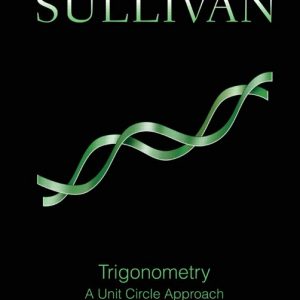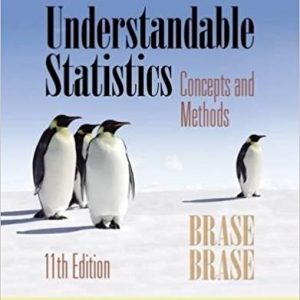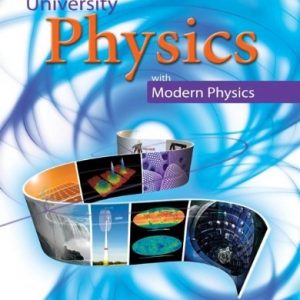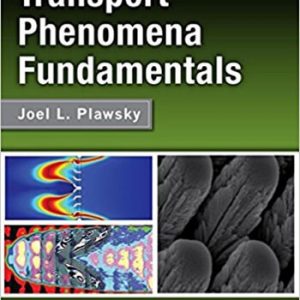This is completed downloadable of Solutions Manual to accompany Introduction to Wireless Systems 1st edition 9780471321675
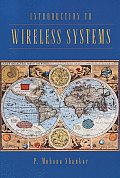
Product Details:
- ISBN-10 : 0471321672
- ISBN-13 : 978-0471321675
- Author: P. M. Shankar
This exciting new book addresses the need for a text that presents a broad range of topics on wireless communication systems for undergraduate seniors and first year graduate students. Introduction to Wireless Systems is the first book to provide the basic analytical tools, fundamental physics, and communication theory needed to fully appreciate the field of wireless communications.
Table of Content:
- CHAPTER 1 HISTORICAL OVERVIEW OF WIRELESS SYSTEMS
- 1.0 Overview
- 1.1 North American Cellular Systems
- 1.2 Pan-European Cellular Systems
- 1.3 Pacific Digital Cellular (PDC) Systems
- 1.4 Universal Mobile Telecommunication Systems (UMTS)/International Mobile Telecommunications 2000 (
- 1.5 Components of a Cellular System
- 1.6 Summary
- Bibliography
- CHAPTER 2 PROPAGATION CHARACTERISTICS OF WIRELESS CHANNELS
- 2.0 Introduction
- 2.1 Attenuation
- 2.1.1 Hata Model
- 2.1.2 Lee’s Model
- 2.2 Indoor Propagation Models
- 2.2.1 Extra Large Zone
- 2.2.2 Large Zone
- 2.2.3 Middle Zone
- 2.2.4 Small Zone and Microzone
- 2.3 Fading
- 2.3.1 Multipath Fading
- 2.3.2 Dispersive Characteristics of the Channel
- 2.3.3 Time-Dispersive Behavior of the Channel
- 2.3.4 Level Crossing and Average Fade Duration
- 2.3.5 Frequency Dispersion versus Time Dispersion
- 2.4 Other Fading Models
- 2.4.1 Rician Fading
- 2.4.2 Lognormal Fading
- 2.4.3 Nakagami Distribution
- 2.4.4 Suzuki Distribution
- 2.4.5 Summary of Fading
- 2.5 Testing of Fading Models
- 2.6 Power Units
- 2.7 Summary
- Problems
- CHAPTER 3 MODEMS FOR WIRELESS COMMUNICATIONS
- 3.0 Introduction
- 3.1 Analog Modulation
- 3.1.1 Amplitude Modulation
- 3.1.2 Angle Modulation
- 3.1.3 Comparison of Analog Modulation Schemes
- 3.2 Digital Modulation
- 3.2.1 Pulse Trains and Pulse Shaping
- 3.2.2 General Analysis of Receivers
- 3.3 Modems
- 3.3.1 Amplitude Shift Keying (ASK)
- 3.3.2 Binary Phase-Shift Keying
- 3.3.3 M-ary Modulation Schemes
- 3.3.4 Constant Envelope Modulation Techniques
- 3.4 General M-ary Modulation Schemes
- 3.4.1 M-ary Phase Modulation
- 3.4.2 M-ary Quadrature Amplitude Modulation (QAM)
- 3.5 Comparison of Modems for Wireless Communications
- 3.5.1 Shannon’s Theorem
- 3.5.2 Channel Capacity in Rayleigh Fading
- 3.6 Summary
- Problems
- CHAPTER 4 CELLS AND CELLULAR TRAFFIC
- 4.0 Introduction
- 4.1 Geometry of a Hexagonal Cell
- 4.2 Co-Channel Interference (CCI)
- 4.2.1 Special Cases of Co-Channel Interference
- 4.3 CCI Reduction Techniques
- 4.3.1 Directional Antenna Using Three Sectors
- 4.3.2 Directional Antenna Using Six Sectors
- 4.3.3 Geographical Model with Several Tiers of Interferers
- 4.4 Cell Splitting
- 4.5 Microcells, Picocells and Fiberoptic Mobile Systems
- 4.6 Coverage Area Estimation
- 4.7 Traffic Capacity and Trunking
- 4.8 Trunking Efficiency of Omni versus Sectorized Antennae
- 4.9 Adjacent Channel Interference
- 4.10 Summary
- Problems
- CHAPTER 5 FADING MITIGATION IN WIRELESS SYSTEMS
- 5.0 Introduction
- 5.1 Effects of Fading and the Concept of Diversity
- 5.2 Other Signal Degradation Effects
- 5.2.1 Effects of Random Frequency Modulation
- 5.2.2 Effects of Frequency-Selective Fading and Co-Channel Interference
- 5.3 Forms of Diversity
- 5.3.1 Space or Spatial Diversity
- 5.3.2 Angle Diversity
- 5.3.3 Frequency Diversity
- 5.3.4 Polarization Diversity
- 5.3.5 Time Diversity
- 5.3.6 Multipath Diversity
- 5.4 Diversity Combining Methods
- 5.4.1 Selection Combining
- 5.4.2 Maximal Ratio Combining
- 5.4.3 Equal Gain Combining
- 5.5 Performance Improvement from Diversity in Terms of Reduced Bit Error Rate
- 5.6 Macroscopic Diversity
- 5.7 Equalization/Frequency-Selective Fading
- 5.7.1 Linear Transversal Equalizer
- 5.7.2 Nonlinear Equalizer
- 5.8 Summary
- Problems
- CHAPTER 6 MULTIPLE-ACCESS TECHNIQUES
- 6.0 Introduction
- 6.1 Frequency Division Multiple Access (FDMA)
- 6.2 Time Division Multiple Access (TDMA)
- 6.3 Code Division Multiple Access (CDMA)
- 6.3.1 Description of a PN Code Generator
- 6.3.2 Properties of Pseudonoise or Pseudorandom Sequences
- 6.3.3 Direct-Sequence Spread-Spectrum Modulation
- 6.3.4 Rake Receiver in DS-CDMA Systems
- 6.3.5 Frequency-Hopping Spread-Spectrum Technique
- 6.3.6 Comparison of DS and FH Systems
- 6.4 Overview of Wireless Systems and Standards
- 6.4.1 Advanced Mobile Phone Systems (AMPS)
- 6.4.2 United States Digital Cellular (IS 54)
- 6.4.3 Japanese Digital System (JDC)
- 6.4.4 GSM
- 6.5 North American Digital Cellular Systems Based on CDMA
- 6.5.1 Forward CDMA Channel
- 6.5.2 Reverse CDMA Channel
- 6.5.3 Power Control in CDMA Systems
- 6.5.4 Hand-off Procedure
- 6.5.5 Diversity in CDMA Systems
- 6.6 Comparison of Multiple-Access Systems in Wireless Communications
- 6.6.1 Capacity of CDMA Systems
- 6.6.2 Comparison of Features and Standards
- 6.7 CDMA2000
- 6.8 Other New Developments: Bluetooth Networks
- 6.9 Summary
- Problems
- APPENDIX A TOPICS IN SIGNALS AND SYSTEMS
- A.1 Fourier Transforms
- A.2 Linear Networks and Impulse Response
- A.3 Orthogonal Functions
- A.4 Probability, Random Variables and Random Processes
- A.4.1 Probability
- A.4.2 Random Variables
- A.4.3 Random Processes
- A.5 Noise in Communication Systems
- A.6 Power Spectra of Digital Signals
- APPENDIX B TOPICS IN COMMUNICATIONS THEORY
- B.1 Orthogonal Frequency Division Multiplexing
- B.2 Teletraffic Considerations
- B.3 Coding
- B.3.1 Speech Coding
- B.3.2 Channel Coding
- B.4 Synchronization
- B.4.1 Carrier Synchronization or Carrier Recovery
- B.4.2 Symbol Synchronization
- B.5 Channel Capacity in Fading Channels
- B.6 Intersymbol Interference and Eye Patterns
- B.7 Error Function
- APPENDIX C TOPICS IN ATTENUATION AND FADING
- C.1 Coherence Bandwidth and Coherence Time
- C.1.1 Dispersion versus Distortion
- C.2 Path Loss Models for Microcells and PCS Systems
- C.2.1 Path Loss Calculations in PCS Systems
- C.3 Macrodiversity Systems
- ACRONYMS
- REFERENCES
- EULA


